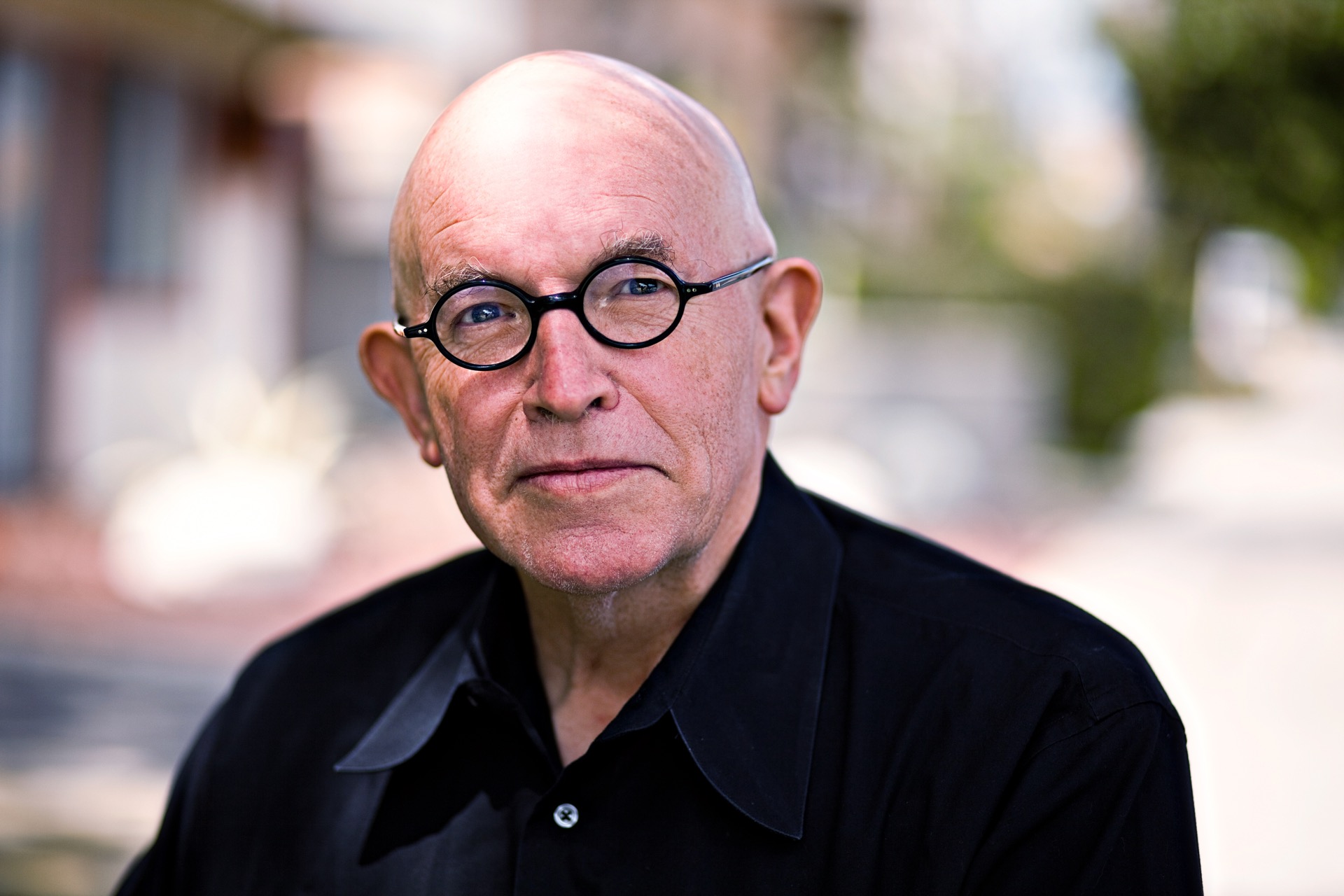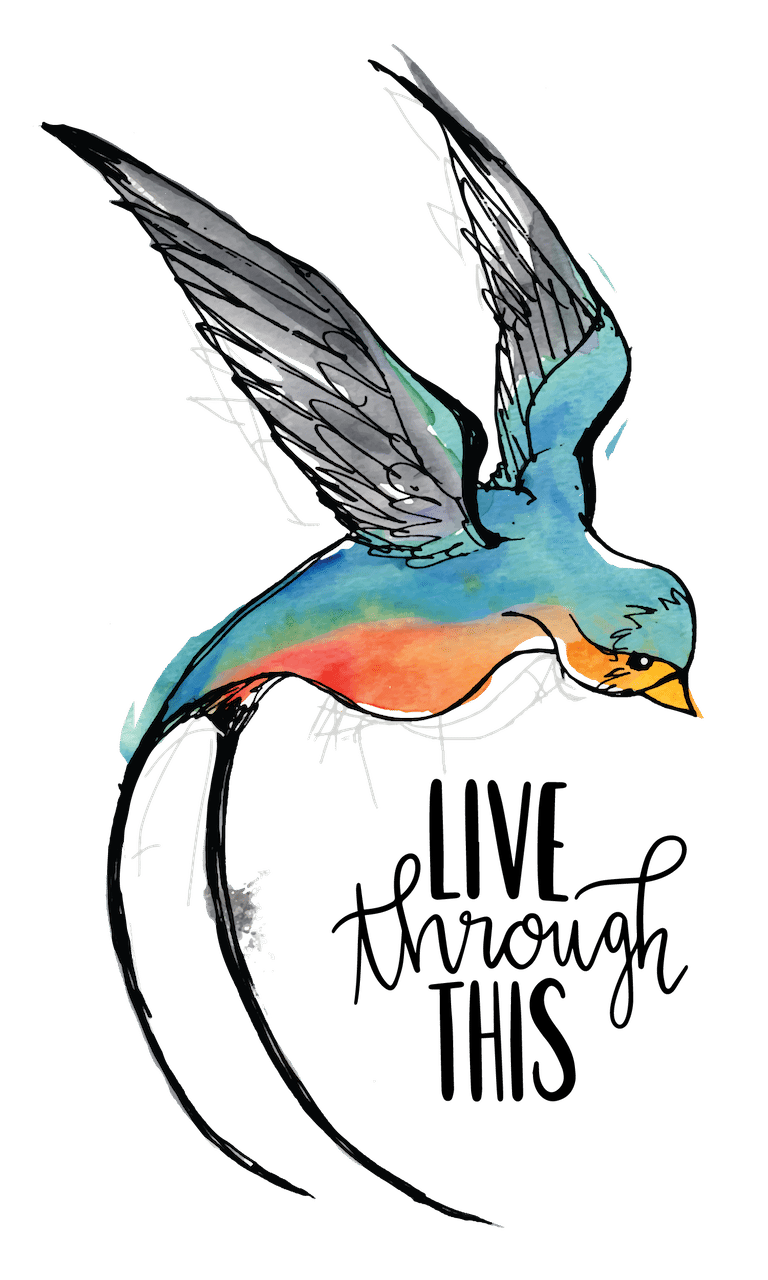
Carlton Davis
is a suicide attempt survivor."I survived a suicide attempt."
Carlton Davis is an artist and writer (formerly an architect) in Los Angeles, CA. He was 69 when I interviewed him on April 13, 2014. He is featured in Of Two Minds, a documentary by award-winning filmmakers Doug Blush and Lisa Klein (who are currently hard at work on The S Word).
I can’t quite believe I’ve lived this long, to be honest with you.
I didn’t think I was gonna make it past 30, or after that, maybe 40. It’s a miracle that I’m still here. It really is.
I started out as an artist and then, because it was the ’60s and everybody was involved in revolution and changing the world, I decided to be an architect. ‘More relevant,’ I thought. But it’s not. It’s no more relevant than art. I went to architecture school in the United States and in Europe.
I’ve always been drawn back toward the art world, even though I find it highly corrupt. I like making art. I dropped out of architecture three times. I tried to be an artist, which is very difficult to survive, and I’d always end up going back. I’d always end up going back to get a job. Finally, in 2009, I had a major operation where I almost died and I decided, ‘Well, I’m gonna do what I want to do.’ Since then, I’ve been a writer and an artist, and that’s kind of how I define myself nowadays.
In 1967, I actually did my first art project.
I went down to New York City and I remember going and seeing a thing called “The Object Transformed,” which had a guy named Ralph Ortiz. He was kind of a well-known artist at that time and he burned a bed and exhibited it at MoMA. I remember my friend and I went down there and we couldn’t believe it. You know, “What is this crap?”
We came back. I went to Yale. We decided to have some fun, and we created a thing called “org art,” or organic art. We did three pieces: one was a real shad fish on a black piece of plywood with three nails in it, which we called “The Last Lunch”; and another one that we called “Ode to Brock,” which was a bunch of scallions and a beer bottle glued onto another piece of plywood; and a third one we called “Org Op No. 1,” because optical art was big then, so we put a bunch of different hotdogs of different lengths on a board with nails coming through them. We went to the college art exhibit and they rejected us. They said it wasn’t serious, so we went outside and we erected what we called a Salon de Refusee, or the salon de refuse. We were more popular than the whole art show. More people came to see us. The college dean’s dog ate the hotdogs.
We were troubled, but why I mention that is because I was having a lot of trouble then as a student. I was flunking everything. Matter of fact, I spent the entire semester in a college fraternity house drinking and playing pool, ‘cause I had no idea what I wanted to be or what I could be. My whole identity earlier had been as a baseball player. I had been offered a professional contract ‘cause I was a very fast pitcher and I wrecked my arm. I came back and I didn’t feel I could compete with all these brilliant Yalees.
This was the one moment I had a shining thing, and after that my world kind of crashed. I got into a big fight with my college roommates. I ended up living in a room, alone, at the top of a tower.
I knew I was flunking everything and I said, “Well, life is not worth living.” And I [attempted suicide].
I called up my friend, who I had done this project with. He was one of the few friends I had left. I had alienated most everybody else. I told him what I’d done. The campus police came and they dragged me out and took me to the hospital, where they saved my life, but I came close to croaking that night.
I remember lying in bed next to a man who did die, and I heard his death rattle throughout the night.
I said, “Okay, I want to live.”
I said, “I’m gonna live.”
And I made it through that. I ended up in a psychiatric part of the Yale New Haven Hospital for a while. I got out and then I got into art and design stuff. It kept my life going. But I also realized I was a person who was subjected to periods of depression, and severe depression, and cycles of great mania and excitement, and I’d stay up all night and do things. I recall reading Sylvia Plath at that time, ’cause I felt a lot like her.
This is a thing that she said that I felt sort of described my life:
“It is as if my life were magically run by two electric currents: joyous and positive and despairingly negative; whichever is running at the moment dominates my life, floods it. I’m now flooded with despair, almost hysteria, as if I were smothering.”
That quote from The Bell Jar kind of defined how I would feel when I was depressed, and I would fight tendencies to [attempt] suicide for many years.
Suicide was always my backup strategy. If I couldn’t deal with things, I was gonna off myself. I struggled with this for a long time.
I found some help in meditation, which got me more leveled out. I had dropped out and was living in the art world in downtown Los Angeles—sex, drugs and rock and roll, you know? I was living on marijuana and espresso coffee. Talk about jazzing yourself up and then crashing, which I would do periodically. I’d stay up for two weeks in a row—all night, all day, writing, drawing, designing—and then I would crash. I would close the door, turn all the lights out and go to bed for a week, at which point, I would think about killing myself all that time. Then it would break and I would come out of it and restart the whole process over again.
Meditation kind of gave me a balance for a while. It didn’t end it, but it balanced me for a while, enough that I went back to my job as an architect and I met my now-wife (I’d been married before but she said, “Nah.” I was too weird, too up and down for her). I married her and we started a business together, which grew quite large. We had 24 employees and we were doing all kinds of interesting projects, but the stress of that got me and I started to have the same things happen again.
I drifted away from my meditation and I started trying to find something to mitigate that. I tried pot again. It didn’t work at all. Then I discovered, lo and behold, this wonderful drug called crack cocaine. Want to talk about high? Whew. I got addicted to that for eight years, and it got so bad that I decided I was never gonna get free of this. I’d gone to the Betty Ford Clinic. I had done all these different programs. Nothing got me off of it.
I decided one evening I was gonna go out. I walked out onto a freeway bridge near our house in Pasadena on the 134 Freeway, and I was gonna jump off. The only thing that held me back was that I didn’t want to kill somebody else. I couldn’t do it. I wanted to, but couldn’t do it. I was even hoping the police would come along and I could get in an altercation with them and I would have suicide by cop, but it didn’t happen.
I went back and they put me in a mental hospital, where I got diagnosed with bipolar. I always thought my problems in life had stemmed from some very early childhood traumas, sexual abuse, some other things that had happened to me.
The wonderful psychiatrist I met—and I still see her to this day—said, “I think there’s something else going on. I think it’s biological.”
She gave me all these psychotropic drugs and, lo and behold, the addiction went away. It all went away. I rose up and I wasn’t in a suicidal mood anymore. Although when I get depressed, that’s the first place I go. I have to tell myself not to go there. I still worry about it to this day. If I got really down again—let’s say I got sick or something—that’s what I’d do. I don’t want to do that, and I’ve seen too much of it, myself.
[…]
I was about 55 years old before I was diagnosed as being mentally ill. When I was first put into the hospital way back in ’67-’68, they treated you a little bit. You watched people get dumped into the ice cold bath and all the shock treatments. What I learned was: you play sane. If you play sane, you can get out even if you aren’t [feeling better]. So I played sane and I got out. No follow up, no nothing. I went to a psychologist for a while, but I don’t think any of them had a clue.
I thought, ‘They’re nuts, I’m not gonna get anywhere near ‘em,’ and I didn’t for years and years and years. I finally went to a psychologist who was sort of the artists’ psychologist here in the Los Angeles. He’s the guy who got me into meditation, which really did help mitigate it, those ups and downs. You can kind of balance them out a little bit, but they were still there. They are still there. They don’t go away. I don’t see them as ever disappearing. They’ll always be with me. I just have to be eternally vigilant. That’s just the first thing that goes in my head [when things get bad].
I’ve been lucky that I haven’t come across some law enforcement officer when I was in a state like that. There were times when I came close. Crack cocaine-brought out some really strange stuff in me. I got into crossdressing and going out in the middle of the night and walking around with a ice pick in my purse, just looking for someone to fuck with me. One evening in downtown Los Angeles, in full drag, totally coked up, I was pulled over to the side of the road by the police.
I went, “Oh, this is it. They find the crack pipe and the stuff in my car and I’m dead.”
I said, “I’m not going to jail. I’ll fight ‘em.”
I would have been dead. I was sitting there by the side of the road and they were starting to go to my car.
Their car bleeped out, “Shooting in south Los Angeles,” and they dropped me and took off.
The only comment the cop had was, he said, “Nice outfit.”
I escaped that one. It’s the closest I’ve come.
[…]
I didn’t take any medication until I was hospitalized in 2001. They started to give me a full complement of drugs. I gained 80 pounds. That’s how I got so heavy.
Finally, I said, “I can’t take this anymore. I’m hungry all the time.”
I worked with my psychiatrist, and we kept playing around with the meds until we found a cocktail that worked. But that weight I put on stayed with me. It was very hard to get off. I think it’s one of the problems with the illness. These drugs make you fat and cause you a whole lot of other kind of problems.
Over the years since then, I’ve gradually titrated down from all of these drugs. I take very, very little at the moment. I take a half a tab of Lamotrigine (or Lamictal). All the rest of it, I don’t touch. At one point, I got really depressed again and they put me on one of these drugs. I can’t remember. Seroquel? I didn’t know my own name.
I said, “No, I can’t take that.”
There are some who are very opposed to medication. Medication worked for me, but you have to be your own advocate because you go to most psychiatrists and they’re just pill dispensers.
They say, “Okay, come in here. Oh, you’re sick? Here, take a dozen of these things and off you go.”
And there’s no other help. With my psychiatrist, we talk and we discuss and we work it out together. I think it’s very unusual. Most psychiatrists aren’t doing that anymore. They’re under a lot of pressure from whatever groups they’re under just to dispense these pills.
Des: Talk more about how to be your own advocate. Many people don’t know how.
Carlton: First of all, you have to read up and understand. For the medications, you’ve gotta look at all the damn side effects to see if you’ve got ‘em.
You cannot just let them go in and say, “Okay, you’re sick,” and that’s it.
You have to say, “Okay, what do I do? How do I deal with it?’
And if they don’t have an answer, you’ve gotta go find your own. I found them with the psychiatrists. My wife went to support groups for me and through NAMI, though when I started going to it, it was more for families. I really found my friends and cohorts in DBSA, Depression and Bipolar Support Alliance. I would religiously go to those every week, ‘cause you’re talking with people who know you and you can say whatever you want and you don’t have to worry. They understand. They’ve been there and they have a lot of good tips.
You have to build a support structure for yourself. A psychiatrist or any medical professional can only be one of those. It’s a three-legged stool, as far as I’m concerned. They’re just one. If you rely on that, you’re screwed. You’ve gotta have friends, family, whatever else—your stool.
A lot of people think that, because they’re mentally ill, they’re not capable. You know, ‘Oh, I can’t make decisions.’ Well, bullshit. You can. You have to make yourself aware and you have to not pull back from the world because you think, ‘Oh, I can’t deal with it. I’m mentally ill.’ Everybody has some problems of some kind. You don’t give up. You don’t let somebody else dictate to you what you should do. You have to stand on your own two feet.
[…]
Des: Tell me what a suicidal person looks like.
Carlton: Like anybody else. They look like anybody. Anybody could do it. Look like me, look like you, look like him. We don’t look different. It’s all in [the mind]. No, we’re no different.
Des: Is suicide still an option for you?
Carlton: I would say yes, but I would also say god, I hope not. I can’t turn off my brain… I know twice a year that I have major depressions. One is in late January, and the other is in early fall.
When I was 5, I was kidnapped by my mother. It’s not like I was put up for ransom. My mother ran off with me to avoid my father. My father came and took me from my mother’s aunt and sent me back to Rochester, New York. Then, because nobody could deal with me, I ended up in a foster home and I got sexually abused. This all happened to me in a very short period of time when I was 5, all around January 1949. Every year about that time, I start to get depressed and that option is always there. I think, ‘Well, why live? Just pack it in, give up.’
The other one happens in the fall, which is always the start of school. I hated [school], being not only probably an emotionally disturbed child at that age, but also incredibly dyslexic and left-handed. I remember a teacher pulled the pencil out of my left hand and tried to make me write with my right. I got so pissed off at her that I stabbed her with the pencil…
I have to be especially wary those two times a year when that ideation comes up, and I have to say, “Okay, this will pass. This will pass. You gotta just let it pass…”
I don’t know. I can’t say no.
I can’t say, “No, I’ll never do it again.”
No, no, no. The thought is always there. It’s always behind the screen, so to speak. It’s there. Would I do it? I hope to god not. I hope that I can be a person that shows, ‘Hey, you can survive this. You can get beyond it.’
Thanks go out to my wonderful friends Sarah Steck and Eric Monacelli for allowing me to use their home for interviews, and to Kiera and Josh of Jakfoto Films for donating their time and resources to filming said interviews.


